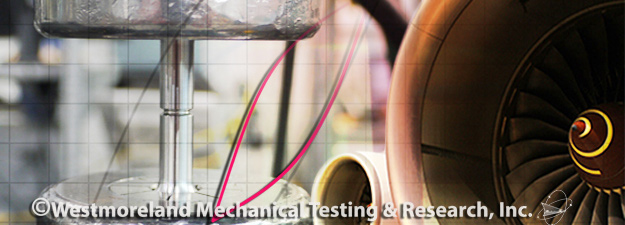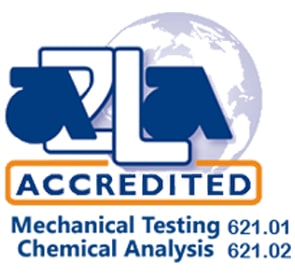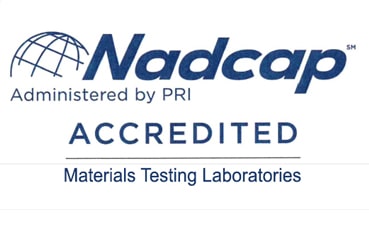Fatigue Testing

Westmoreland Mechanical Testing & Research performs customizable fatigue testing for commercial industries, such as oil & gas, power generation and aerospace. Our fatigue testing and analysis can prevent service interruption, failure and its consequences including loss of revenue due to fatigue damage.”
Expedited Fatigue Testing Services Are Available- Contact Us Today!
- Customized Servo-Hydraulic Test Equipment
- Extensive Scope and Comprehensive Data Unique to Each Test
- Temperature Ranges from Cryogenic to 2400°F
- Sample Sizes Capacity Ranges from 25grams to 1,000,000lbs
- High Cycle, Low Cycle, Fasteners and Fatigue Testing
- What Is Fatigue Testing?
- Customizable Fatigue Testing Capabilities
- Differences Between Low Cycle Fatigue and High Cycle Fatigue Testing
- Low Cycle Fatigue
- High Cycle Fatigue
- Fastener Testing
- Fatigue Testing Services
- Standardized Fatigue Testing Services
What Is Fatigue Testing?
A fatigue test analyzes the behavior of materials while under stress of variable loads. Typically, two loads apply to a material – a specified mass load (i.e., zero) and an alternating load. These loads cycle and measure until the material fails. This failure of a material under fatigue is called fatigue life.
Fatigue degradation (fatigue life) is not limited to metals, and most engineering materials (ceramics, composites, aggregates, etc.) are susceptible to fatigue damage. The strength of materials is a measure of its ability to resist deformation, such as being stretched, bent, etc.
Customizable Fatigue Testing Capabilities
Westmoreland Mechanical Testing & Research’s substantial onsite capabilities allow us to customize each project to your materials and mechanical specifications. Westmoreland Mechanical Testing & Research provides unique customer advantages in fatigue testing, including custom analyzation, superior turnaround time, and an extensive scope of fatigue testing:
- Custom Analyzation - We design and write proprietary software to analyze your test results.
- Superior Turnaround Time - To ensure the best turnaround time on your projects, we design and machine specialized fixtures.
- Customizable, Extensive Scope – For your unique testing needs we have the resources, experience, and testing capacity to get the job done right.
- Experts in Fatigue - We are specialists in conducting axial tests on many different types of specimens.
These tests conduct load, strain, or position control on servo-hydraulic test equipment at temperatures ranging from Cryogenic to over 2400°F. We have the flexibility and resources to accommodate a wide variety of sample sizes with our machine capacity ranging from 25grams to 1,000,000lbs.
WMT&R is an industry leader in Low Cycle Fatigue (LCF) and High Cycle Fatigue (HCF)Testing for the automotive, aeronautic, motorsport, marine, ministry of defense, manufacturing and power generation industries.
What’s the Difference Between High Cycle Fatigue and Low Cycle Fatigue?
Low Cycle Fatigue
The low cycle fatigue test runs in strain control with the load being a dependent variable. The strain variables that are usually defined by the customer are:
- Wave Shape (triangle/sinusoidal/trapezoidal)
- Frequency (Hz, opm, strain rate = strain%/sec)
- Maximum Target Strain or Strain Range (%)
- A-Ratio (amplitude/mean) or R-Ratio (minimum/maximum)
- Switch Point (Specific time or cycle at which test is stopped)
- Discontinue Test (Specified cycle count at when reached the test is terminated)
There are three stages to low cycle fatigue testing.
- The first stage is designed to detect crack initiation on a polished specimen.
- The second stage is propagation life, which occurs after initiation.
- The third stage is failure, determined by some percentage of load drop from a stable condition.
High Cycle Fatigue
Unlike LCF, high cycle fatigue (HCF) tests conduct on specimens in force control. These tests determine the number of cycles to fracture for each specimen, and the data can compile into stress-life (S-N) curves. Nominal stress levels in HCF tests are low — significantly below the material’s yield strength.
Westmoreland Mechanical Testing & Research (WMT&R) provides high cycle fatigue (HCF) services that can help in determining the fatigue strength of a particular material through a variety of tests including but not limited to:
- Axial Fatigue (ASTM E466)
- 3-Point Bend Fatigue
- 4-Point Bend Fatigue
- Cantilever Fatigue
- Rotating Beam Fatigue (RR Moore style)
These tests conduct at cryogenic to elevated test temperatures. WMT&R is a one-stop source for low cycle fatigue (LCF) machining, low stress grinding/polishing, and LCF testing ready to meet customers’ ISO/ASTM testing requirements.
Fastener Testing
Fastener Testing directly affects every one of us on a daily basis. The cars we drive, the planes in which we fly, and the tools we use to do our work all have nuts, bolts, and fasteners. Our fatigue department is involved with a diverse array of fastener tests including fatigue tensile, wedge tensile, double shear, stress rupture, stress durability, microstructure and chemical analysis.
Fatigue Testing Services Include:
- High-Cycle Fatigue (HCF)
- Low-Cycle Fatigue (LCF)
- Fastener Testing
- Fracture Toughness (KIC)
- Axial Fatigue
- Displacement Controlled
- Strain Controlled
- Load Controlled
- Rotating Beam Fatigue
- Three Point Bend Fatigue
Data reported on this test includes load peaks, strain peaks, hysteresis loops at specific intervals, calculated plastic, and elastic strain, first cycle information, and half-life cycle loop information. In addition to axial tests, we also test materials in bending and rotating modes. Bending fatigues could involve three or four-point flexural tests or cantilever fatigue tests. Rotating beam fatigues are commonly done and are available at room or elevated temperatures. Machining samples from exotic or difficult material are no problem for our in-house machine shop.
Fastener Testing is a critical component of fatigue testing that affects several sectors. From the cars we drive, the planes in which we fly, and the tools we use to do our work all have nuts, bolts, and fasteners of some kind. Our fatigue department is involved with a diverse array of fastener tests such as fatigue tensile, wedge tensile, double shear, stress rupture, stress durability, microstructure and chemical analysis. The laboratories at WMT&R meet all the requirements of the Fastener Quality Act and its Amendments.
Do you need testing on full-size components or assemblies? We have designed and executed fatigue tests for a variety of sectors and applications including:
- railroad locomotive suspension springs
- aeronautic materials
- automotive components
- aircraft supports
- helicopter rotor blades
- coal mining equipment
- and motorsports components
All of our tests may be run under computer data acquisition to achieve the best performance. Computer data acquisition allows us to obtain data on how a material changes in response to fatigue loading based on your particular sector applications. This data is available to you typically in a tabular data summary and as graphical representations. Due to the nature of fatigue testing, it is necessary to keep you informed as to the status of your testing
For a Complete List of Fatigue Testing Services, Please Request A Quote or Call 724-537-3131.
Standardized Fatigue Testing Specifications
Here is a sample of the standardized fatigue tests that WMT&R is accredited to perform:
- ASTM E399: Standard Test Method for Linear-Elastic Plane-Strain Fracture Toughness KIC of Metallic materials
- ASTM E466: Standard Practice for Conducting Force Controlled Constant Amplitude Axial Fatigue Tests of Metallic Materials
- ASTM E468: Standard Practice for Standard Practice for Presentation of Constant Amplitude Fatigue Test Results for Metallic Materials
- ASTM E606: Standard Practice for Strain-Controlled Fatigue
- ASTM F1160: Standard Test Method for Shear and Bending Fatigue Testing of Calcium Phosphate and Metallic Medical Coatings
- ASTM F1440: Standard Practice for Cyclic Fatigue Testing of Metallic Stemmed Hip Arthroplasty Femoral Components without Torsion
- ASTM F1612: Standard Practice for Cyclic Fatigue Testing of Metallic Stemmed Hip Arthroplasty Femoral Components with Torsion
- ASTM F1800: Standard Test Method for Cyclic Fatigue Testing of Metal Tibial Tray Components of Total Knee Joint Replacements



